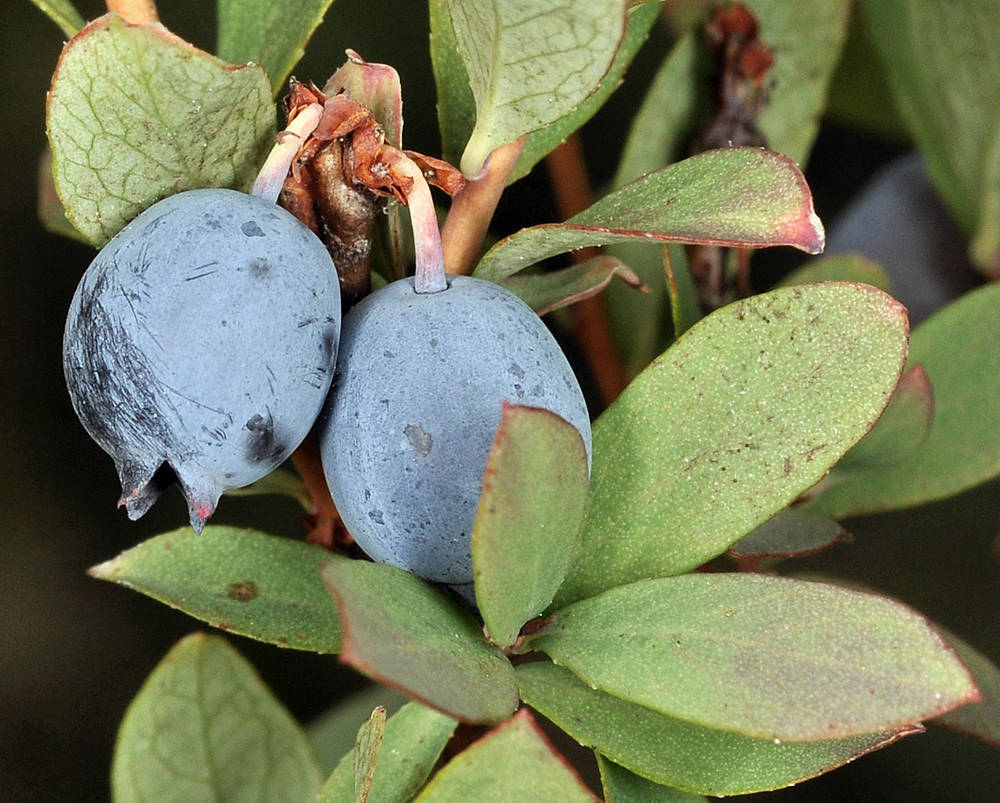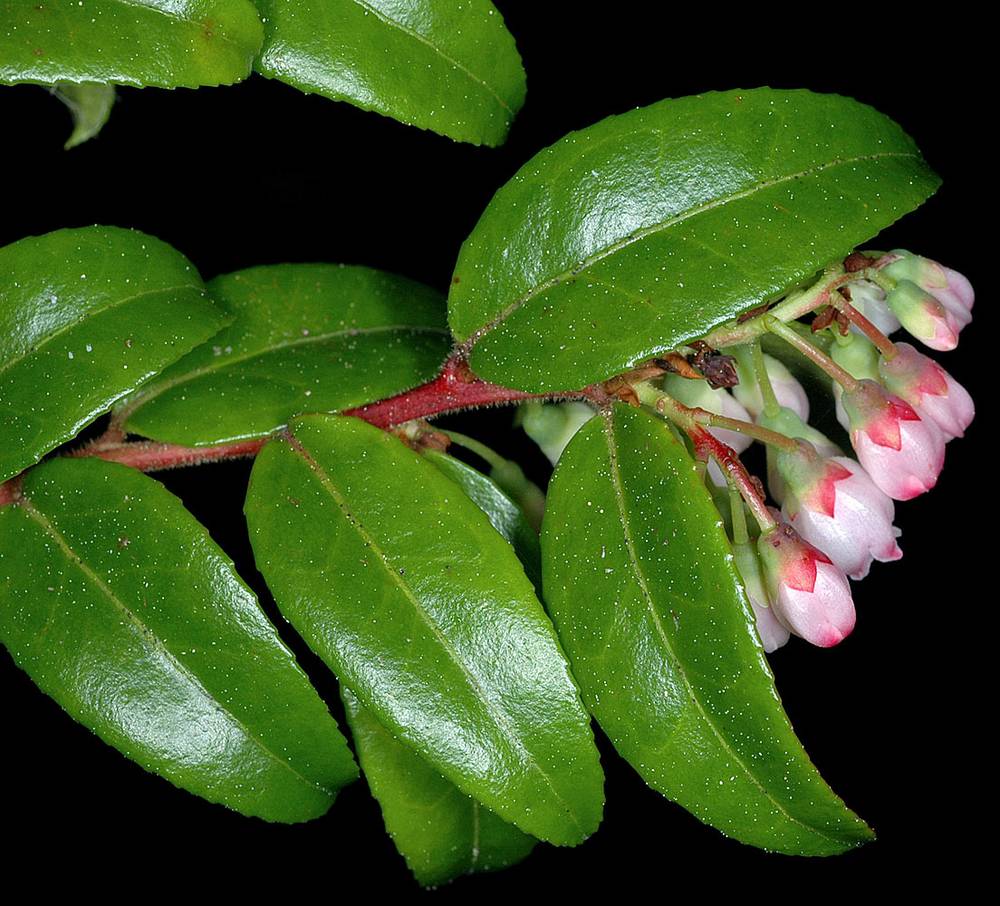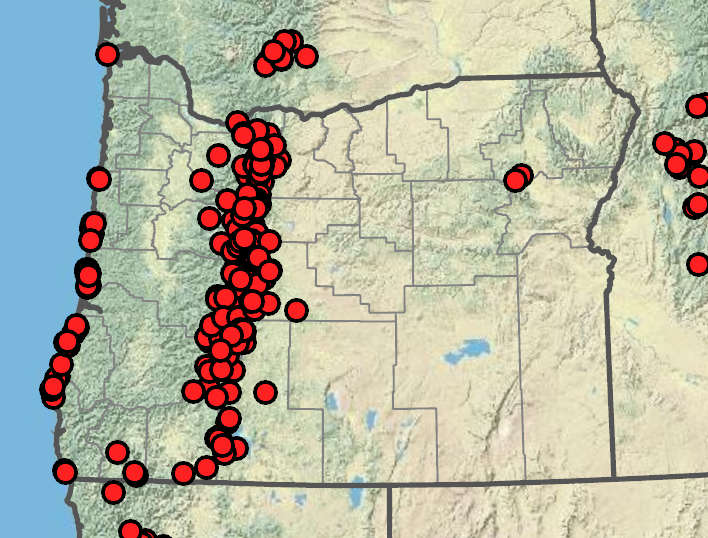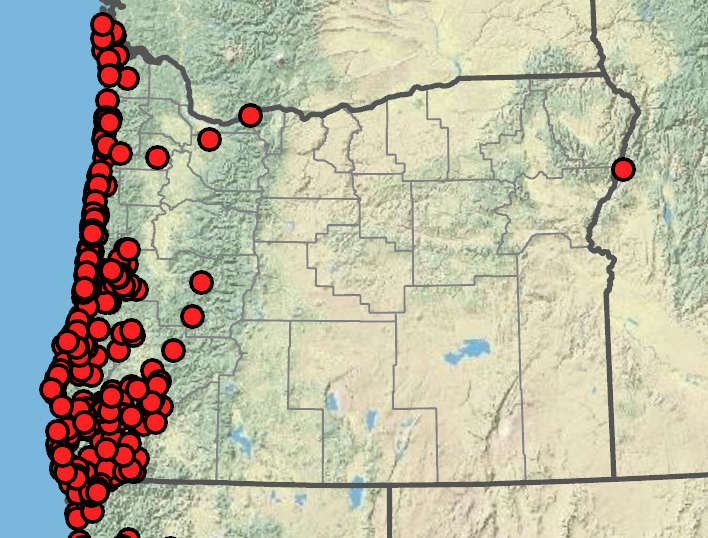Vaccinium uliginosum
Vaccinium ovatum
bog bilberry, bog blueberry
California huckleberry, evergreen huckleberry
ovate to elliptic, 9–29 × 4–18 mm; thin or thick at maturity;
margins entire;
tips rounded to acute;
surfaces abaxially glabrous or glaucous, adaxially glabrous.
narrowly ovate, 15–40 × 8–20 mm, light green abaxially, green adaxially; thick; leathery; firm;
margins sharply serrate from tips to 67% or near base;
tips acute to acuminate;
surfaces abaxially sparsely glandular with blackish hairs, adaxially glabrous.
racemes, 2–4-flowered, occasionally 1-flowered.
terminal racemes.
distinct;
sepals 4 or 5, usually glaucous;
corollas urceolate, 4–6 × 2–5 mm, white to pink, glaucous;
petals 4 or 5;
filaments ? anthers, glabrous.
sepals 5;
calyx lobes fused at base, deltate, red, glaucous;
petals 5;
corollas campanulate to urceolate, 2.5–7 × 1.5–5 mm, pink, glabrous;
filaments pubescent.
4–9 mm in diameter, blue to bluish black, with a faint bloom.
6–9 mm in diameter, blue to black, sometimes with a bloom.
=24, 48, 72.
=24.
Vaccinium uliginosum
Vaccinium ovatum
Wet mid-elevation montane and coastal habitats. Flowering May–Sep. 0–2400 m. BW, Casc, ECas, Est, Sisk. CA, ID, NV, WA; northern US and Canada; Asia, Europe. Native.
Some authorities consider the coastal form of V. uliginosum a distinct species (V. occidentale). If recognized, this species would be identified by its distinctly reticulated leaf veins, thin leaves, and smaller fruits.
Coastal and occasionally inland coniferous forests. Flowering Mar–Jun. 0–800 m. CR, Est, Sisk. CA, WA; north to British Columbia, south to Mexico. Native.
The distribution of V. ovatum populations is interesting from a biogeographic perspective. In British Columbia, Washington, northern Oregon, and southern California, V. ovatum is generally found within several kilometers of the coast. However, in northern California and Mexico, populations are found up to 50 kilometers inland and in southern Oregon up to 100 kilometers inland.
Stephen Meyers
Stephen Meyers
- Local floras:
BC,
OR,
WA
- Local Web sites:
Flora NW,
PNW Herbaria
WildflowerSearch
iNaturalist (observations)
USDA Plants Database
- LBJ Wildflower Center
- SEINet
- Plants of the World Online
- Encyclopedia of Life
- Wikipedia
- Google Image Search
- Local floras:
BC,
CA,
OR,
WA
- Local Web sites:
CalFlora,
CalPhotos,
Flora NW,
PNW Herbaria,
Turner Photog.
WildflowerSearch
iNaturalist (observations)
USDA Plants Database
- LBJ Wildflower Center
- SEINet
- Plants of the World Online
- Encyclopedia of Life
- Wikipedia
- Google Image Search





